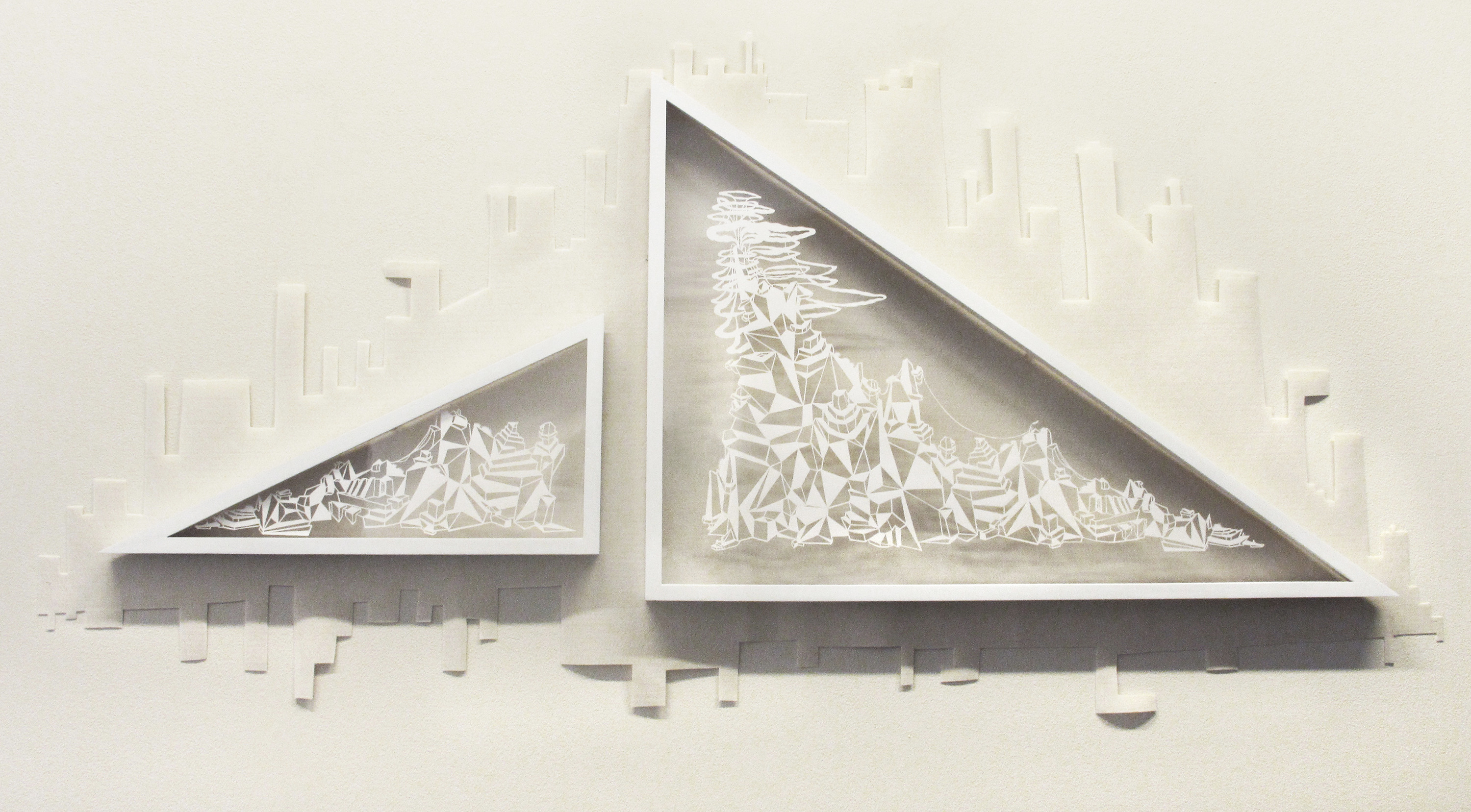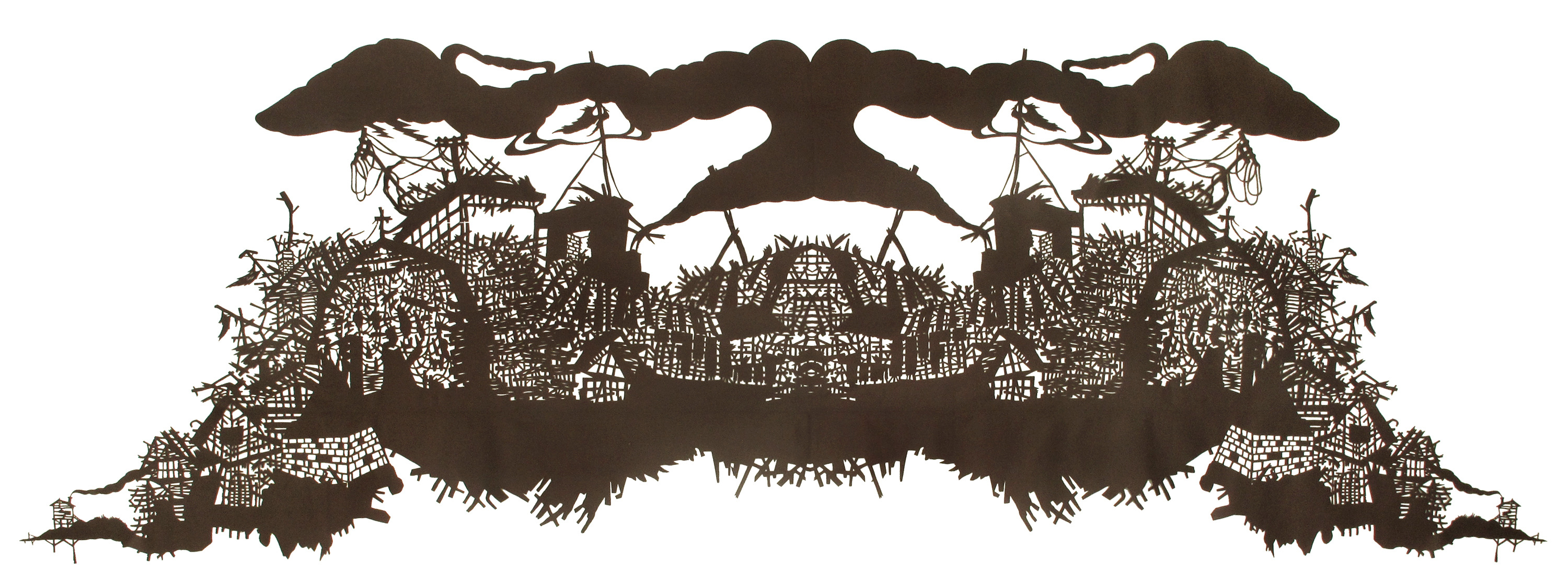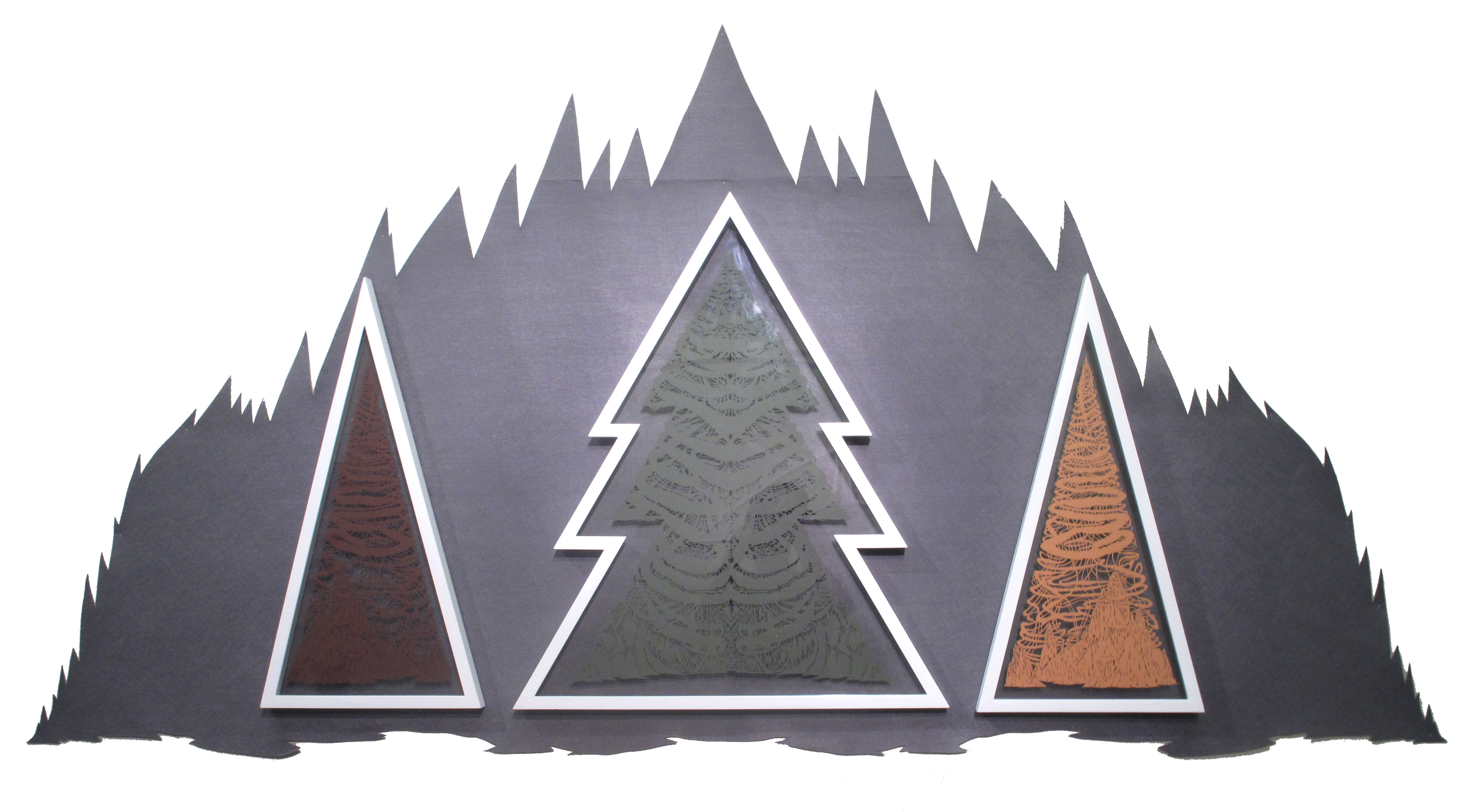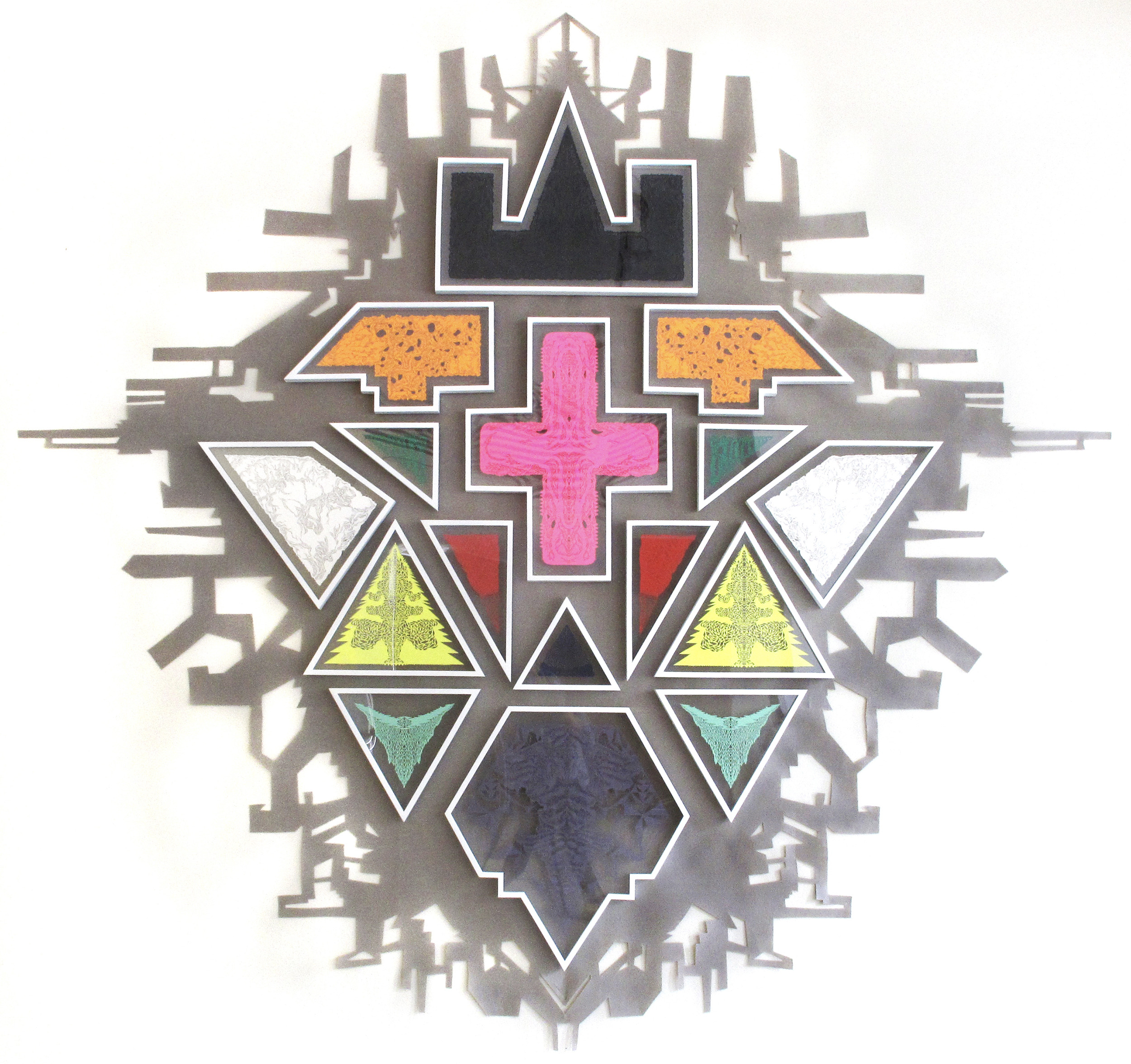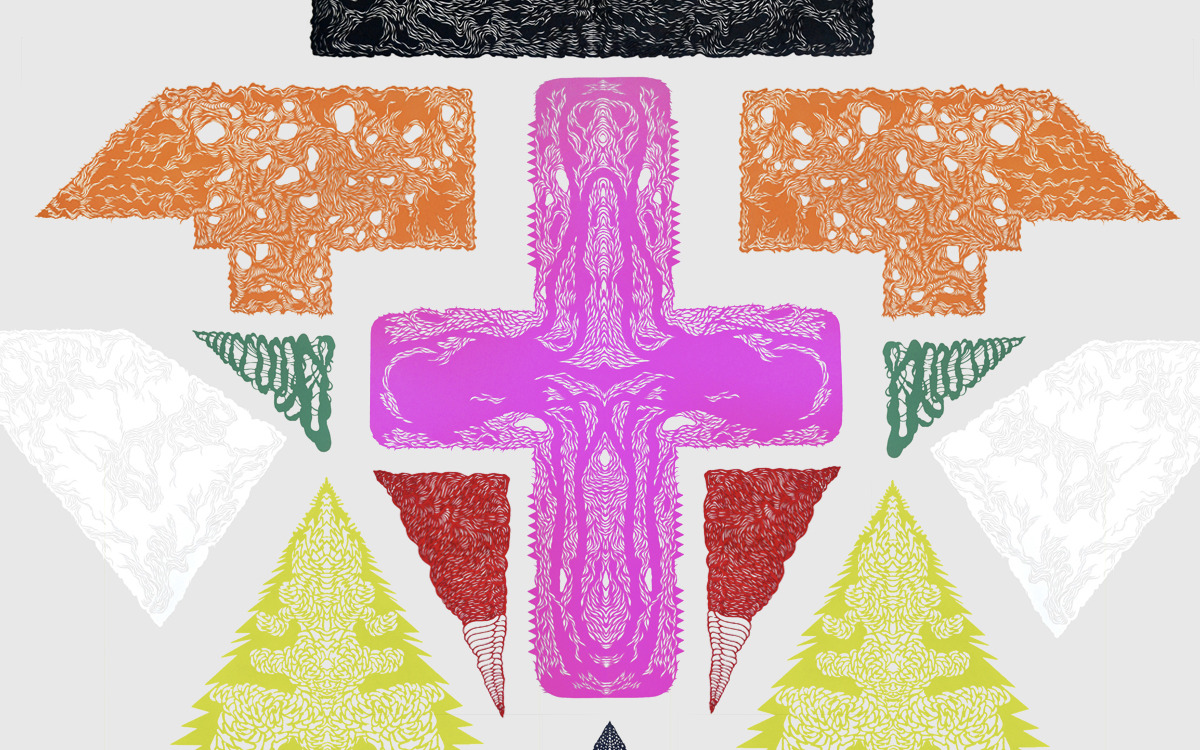
Flatland
Ryan Villamael
Silverlens, Manila
Installation Views
About
Ryan Villamael lays out the new terrain shaped by forging together two complex structures: the city’s multifaceted scenery and his meticulous process of paper cutting; the landscape’s imploded view absorbed and then unfolded—to reveal its transformation:
“(The landscape) becomes a jungle of forms and figures divided through cutting, slicing, and then re-attached through stitching. It gives way to the assembly of new structures, letting the materials create newfound space.”
This new space according to Villamael emerges out of the fragments of city life, out of the gathered images from different time and places. He continues: “The unpredictable turbulent atmosphere, the excavated grounds where new structures rise, tangled wires through corners and avenues, vines and branches creeping out from gaps of abandoned walls, as if conquering the land, spawning habitation—a wild overgrowth.”
For Villamael, the chaotic sequences of city life form the seeds where new organisms germinate. A kind of sinister growth prevails from his method of paper cutting, where it starts from the center and continues to expand outward. He then goes further to employ stitching, mounting, collage and color to raise it from its two- dimensional surface. And as if all of these are not enough, he continues to heighten the perplexity by splitting some of the pieces apart and then confining them in separate frames, adding an eerie quality to the ensemble.
In Villamael’s hands, the decorative nature of the once domesticated art of paper cutting has evolved into a visual feast; something closer to the macabre than home. And in doing so, he becomes one of the few artists from our region to go back to an ordinary craft only to push it forward for extraordinary effect. The images, patterns, and juxtapositions come out as fresh compendiums to our modern state while its archaic quality and simplistic nature are preserved.
From the other side of the globe there are artists like Clare Twomey and Ghada Amer who are gaining recognition by pushing the decorative arts to the extreme: Twomey with her ceramic-based installations of kitchenware and Amer with her large- scale, embroidered paintings. Even graphic designer Dana Tanamachi has become widely acclaimed because of her chalk-based letterings, proof that people have always been drawn to the first caress of their childhood crafts.
In Villamael’s case, he can trace his ideas back when he was still in high school, designing the silhouette for their shadow plays. These productions were his primer for putting blade on paper instead of brush and ink. His practice evolved as Ryan graduated from the U.P. Fine Arts program in 2009 where he has experimented freely on different forms like painting and sculpture before falling back to paper cutting.
He observes how paper cutting is not really that far from basic drawing. It requires the same mechanism for the transference of imagination in skillfully applying lines and shapes on paper. What’s interesting though is how the former relies on the negative space produced rather than accumulation, how a vision is manifested through the obliteration of surface like in the intricate silhouette produced from a shadow play, the punching of holes for light to pass through. In his paper cutouts, which are also laced with byzantine patterns, the amount of expression is equal to the amount of negation. As the image becomes more striking, the material becomes less evident. It would be hard to come by with any other wall–bound form that adheres to such process of elimination the same way a sculpture or wood carving does.
And as for the artist’s attachment with the material, Villamael confesses the frail qualities of paper that contains everything that is temporal, as ephemeral as a moth’s wing. Paper is mere paper, nothing more, and is always subject to tear, drench, fade, and decay. But in Ryan Villamael’s hands it is almost heartbreaking to see how it is emancipated, especially when exposed freely on the wall, unframed. Like a rudimentary organism that evolved into its majestic state, holding on to its fragile existence.
Though the imagery of his works can be as intricate as a drawing or painting, the method emanates a kind of self-effacement achieved through the cold-hearted slice of the blade instead of applying color and brushstrokes. This is what separates Ryan from some of the artworks of his generation that adhere to the same working-class’ subjects of gloom, danger and despair; his works detonate in a controlled and deliberate manner, in such a way that the pieces can come out as textbook activity from an unfamiliar world.
Ryan Villamael can strike us as an artist of persistence, not of consequence, as early on in his career he has steadily maintained a discipline out of his inclination to a method more often subjected to the works of hobbyists than in the history of high art. But his vision of the craft is uniquely his own, and in fusing it with concepts of fine art, it may call again the attention given to the long-standing theorizing about craft vs. art, which may have reached impasse with artworks like this to give way to a more timely occurrence—the conceptual significance of craft in contemporary art.
Words by Cocoy Lumbao
The exhibition attempts to explore and reexamine the concept of “landscape”. A jungle of forms and figures divided through cutting, slicing and again stitched together assemble new structures, letting the materials somewhat create a newfound space. Images have been gathered from occurrences in different times and places: the unpredictable turbulent atmosphere, on digging of the ground for concrete structures and edifices, through corners and avenues, some tangled wires, vines and branches left in abandonment creeping out from different corners and gaps of walls, as if sneakily conquering the flatland, spawning habitation- a wild overgrowth.
Ryan Villamael
July 2012
Works
